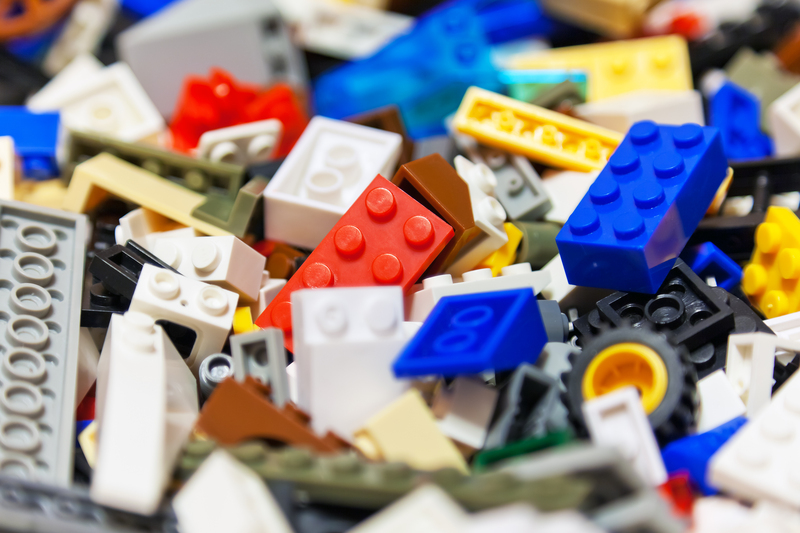Turning Landfill Fears into Artful Cheers Using Upcycled Materials
Every year, vast quantities of waste find their destination in overflowing landfills around the globe. This escalating concern doesn't just harm the environment; it also raises deep fears about the future of our planet. But what if these anxieties could be transformed into something inspiring and beautiful? That's where upcycled art enters the scene. By converting discarded items into creative masterpieces, artists and eco-enthusiasts are turning landfill fears into artful cheers using upcycled materials.
Understanding the Landfill Crisis
To appreciate the power of upcycled creativity, we must first understand why landfills are an issue worth addressing. Landfills contribute significantly to environmental degradation by:
- Releasing harmful greenhouse gases such as methane
- Leaching toxic chemicals into soil and groundwater
- Taking up valuable land that could serve other ecological or community purposes
- Damaging biodiversity and impacting human health
Despite increased environmental awareness, global waste production continues to rise, intensifying landfill fears. The challenge is not just to reduce the amount we throw away, but also to find inventive ways to repurpose what we have already discarded. Here, upcycling takes on a vital role.

What is Upcycling and Why Does It Matter?
Upcycling transforms unwanted materials or products into new items of higher quality or environmental value. Unlike recycling, which often breaks down materials into their raw form, upcycling retains much of the original material's integrity while enhancing it artistically or functionally.
- Reduces landfill waste: Every upcycled creation diverts potential trash from dumping grounds.
- Saves resources: It uses less energy and water compared to traditional recycling or producing new items from scratch.
- Sparks creativity: Upcycling challenges individuals to think innovatively and see beauty in the overlooked.
- Builds community: Public art projects unite people behind sustainable initiatives.
The rise of upcycled artwork showcases how one person's trash can literally become another's treasure--and provide hope for a cleaner, more imaginative world.
Upcycling: Breathing Life into Discarded Objects
Upcycled materials range from plastics and glass to textiles and scrap metal. Instead of ending up in a landfill, these materials become the raw components of upcycled art installations, sculptures, and functional everyday objects. Here's how the creative process works:
1. Sourcing Materials: Turning Waste Into Wealth
Artists and DIY enthusiasts find inspiration in:
- Old bottles and jars
- Disused tires and wheels
- Broken electronics and appliances
- Scrap wood and pallets
- Worn-out clothes and textiles
Many communities now host "swap shops" or upcycling warehouses, where individuals can freely exchange unwanted goods. These initiatives foster eco-conscious creativity while reducing the burden on local landfills.
2. Reimagining Function: Artistic Vision Meets Environmental Responsibility
What sets upcycled art apart is its dual purpose. Each piece marries artistic vision with environmental stewardship.
- Functional upcycling: Turning old furniture into unique home decor or garden planters
- Aesthetic upcycling: Transforming plastic bottles into vibrant chandeliers or mosaic sculptures
3. Sharing Stories: From Landfill Anxieties to Artful Celebrations
Many upcycled pieces tell powerful stories. By showcasing the journey from trash to treasure, creators spark conversations about sustainability and collective action. Art exhibits using upcycled materials often include information about where the materials came from and the environmental impact avoided.
Public installations using upcycled materials can:
- Raise awareness about local waste issues
- Encourage others to rethink their disposal habits
- Inspire engagement and environmental pride
Famous Examples of Upcycled Art Around the World
Artists globally are turning landfill fears into artful cheers with upcycling. Here are a few renowned examples that highlight the transformative power of this practice:
- Washed Ashore (USA): This initiative creates stunning sculptures of sea creatures using plastic collected from beaches.
- Bottle Cap Mosaic Murals (Worldwide): Artists craft colorful murals from millions of used bottle caps, turning potential landfill waste into public masterpieces.
- EcoARK Pavilion (Taiwan): Constructed from 1.5 million recycled plastic bottles, this architectural marvel serves as a symbol of sustainable innovation.
- Trash People by HA Schult (Germany): Thousands of life-sized figures made entirely from waste have toured the world, promoting dialogue on consumerism and waste.
Each of these projects captures the essence of reducing landfill fear through upcycled art, inspiring communities to take action and celebrate sustainability.
The Environmental and Social Impact of Upcycled Creations
The benefits of artistic upcycling extend beyond merely diverting materials from landfill. The environmental and social impacts include:
- Reduced Carbon Footprint: Upcycling requires less energy than producing goods from scratch, thereby lowering emissions.
- Fostering Circular Economy: By promoting reuse and creative innovation, upcycling supports a sustainable economic model.
- Empowering Local Communities: Upcycled art projects often employ local artisans and engage residents, fostering a sense of ownership and pride.
- Educational Opportunities: Schools, galleries, and workshops use upcycled materials to teach sustainability--turning landfill worries into upcycled learning experiences.
Social Movements Fueled by Upcycled Art
Grassroots organizations and environmental groups increasingly use upcycled art as a tool for activism. Public installations, protest art, and social media challenges all play a role in spreading awareness. Examples include:
- Community upcycling festivals and workshops
- Collaborative murals addressing local waste issues
- Online galleries and virtual exhibitions dedicated to upcycled works
How You Can Turn Landfill Fears into Artful Cheers at Home
You don't have to be a professional artist to contribute to turning landfill fears into artful cheers using upcycled materials. Here are practical steps to bring upcycling into your daily life:
1. Start Small: Everyday Upcycled Projects for Beginners
- Glass Jar Lanterns: Clean and decorate old jars with paint or string lights to make creative lanterns.
- Tin Can Planters: Use empty cans as planters for herbs or small flowers. Paint or decorate for added creativity.
- T-shirt Tote Bags: Transform old shirts into reusable grocery bags--no sewing skills required!
- Plastic Bottle Bird Feeders: Cut, decorate, and hang used bottles as bird feeders outside your window.
2. Get Inspired: Engage with Local Upcycling Communities
Many cities have upcycling centers, art collectives, or swap events that encourage residents to exchange materials or collaborate on projects. Social media groups and online forums also provide inspiration, tutorials, and platforms to showcase your upcycled creations.
3. Educate and Influence: Share the Message of Upcycled Art
By sharing your upcycled projects with friends, family, or online followers, you encourage others to rethink waste and embrace sustainability. Host an exhibition, document your creative process, or offer workshops in your area to amplify the message.
Upcycled Art in Schools and Education
Engaging students in upcycled art projects is a dynamic way to teach environmental responsibility. Many educational institutions are incorporating upcycling into:
- Art classes, where students use recyclables for sculpture and design
- Science lessons, to demonstrate waste reduction and environmental impact
- School-wide challenges or competitions aimed at reducing landfill waste
These activities nurture eco-minded citizens and cultivate creativity--empowering the next generation to continue turning landfill anxieties into creative celebrations.

Tips for Successful Upcycling Projects
- Plan Ahead: Collect and sort materials with potential for creative reuse.
- Research Inspiration: Browse upcycling guides, tutorials, and art installations for ideas.
- Collaborate: Involve friends, family, or community members for larger projects.
- Stay Safe: Use appropriate tools and handle sharp or hazardous materials with care.
- Tell Your Story: Share the background of each piece and its impact on reducing landfill waste.
The Future: Upcycled Art as a Movement, Not Just a Trend
As concern over environmental sustainability grows, the movement to turn landfill fears into artful cheers by upcycling continues to gain momentum. Innovation in this field is likely to expand, with architects, designers, and tech engineers collaborating on even grander projects. Some fascinating directions include:
- Upcycled Urban Architecture: Buildings constructed from shipping containers, recycled plastics, and salvaged materials.
- Wearable Upcycled Art: Sustainable fashion collections and accessories made from textile scraps and post-consumer waste.
- Digital Upcycling: Virtual reality art galleries showcasing works made entirely from digitized images of real-world waste materials.
The philosophy behind artistic upcycling is powerful: It proves that hope and creativity can arise from environmental despair. With ongoing climate challenges, this movement provides a much-needed sense of agency and optimism.
Conclusion: Joining the Upcycle Revolution
By turning landfill fears into artful cheers using upcycled materials, we take meaningful steps toward sustainability, creativity, and community. Every upcycled project diverts waste, tells a story, and offers a model for others to follow.
Whether it's a small home project or a monumental public sculpture, upcycled art inspires people of all ages to view unwanted materials as resources rather than burdens. In the face of growing environmental concerns, upcycled creations offer not only art but hope--reminding us all that transformation is possible, one piece of "trash" at a time.
Let's turn landfill fears into artful cheers. Start upcycling today and help shape a cleaner, more imaginative world!
